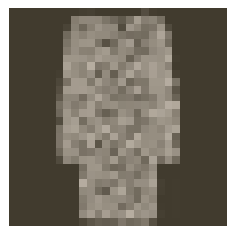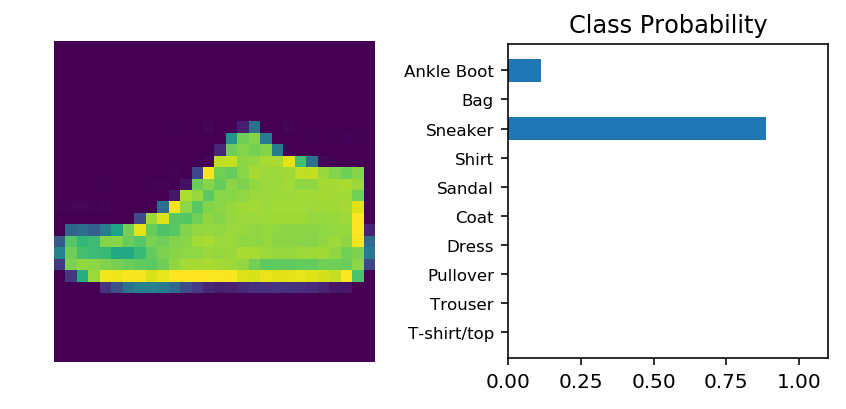“有机会还是多学学, import tensorflow as torch!
前言
上一篇内容学习了对简单手写数字体识别神经网络的训练,本文针对另外一个数据集Fashion-MNIST进行训练,继续实战练习。 资料来源Udacity,open source copyright satisfied.

正文
Classifying Fashion-MNIST
Now it’s your turn to build and train a neural network. You’ll be using the Fashion-MNIST dataset, a drop-in replacement for the MNIST dataset. MNIST is actually quite trivial with neural networks where you can easily achieve better than 97% accuracy. Fashion-MNIST is a set of 28x28 greyscale images of clothes. It’s more complex than MNIST, so it’s a better representation of the actual performance of your network, and a better representation of datasets you’ll use in the real world.
![]()
In this blog, you’ll build your own neural network. For the most part, you could just copy and paste the code from Part 3, but you wouldn’t be learning. It’s important for you to write the code yourself and get it to work. Feel free to consult the previous notebooks though as you work through this.
First off, let’s load the dataset through torchvision.
import torch
from torchvision import datasets, transforms
import helper
# Define a transform to normalize the data
transform = transforms.Compose([transforms.ToTensor(),
transforms.Normalize((0.5,), (0.5,))])
# Download and load the training data
trainset = datasets.FashionMNIST('~/.pytorch/F_MNIST_data/', download=True, train=True, transform=transform)
trainloader = torch.utils.data.DataLoader(trainset, batch_size=64, shuffle=True)
# Download and load the test data
testset = datasets.FashionMNIST('~/.pytorch/F_MNIST_data/', download=True, train=False, transform=transform)
testloader = torch.utils.data.DataLoader(testset, batch_size=64, shuffle=True)
Here we can see one of the images.
image, label = next(iter(trainloader))
helper.imshow(image[0,:]);

Building the network
Here you should define your network. As with MNIST, each image is 28x28 which is a total of 784 pixels, and there are 10 classes. You should include at least one hidden layer. We suggest you use ReLU activations for the layers and to return the logits or log-softmax from the forward pass. It’s up to you how many layers you add and the size of those layers.
from torch import nn, optim
import torch.nn.functional as F
# TODO: Define your network architecture here
class Classifier(nn.Module):
def __init__(self):
super().__init__()
self.fc1 = nn.Linear(784, 256)
self.fc2 = nn.Linear(256, 128)
self.fc3 = nn.Linear(128, 64)
self.fc4 = nn.Linear(64, 10)
def forward(self, x):
# make sure input tensor is flattened
x = x.view(x.shape[0], -1)
x = F.relu(self.fc1(x))
x = F.relu(self.fc2(x))
x = F.relu(self.fc3(x))
x = F.log_softmax(self.fc4(x), dim=1)
return x
Train the network
Now you should create your network and train it. First you’ll want to define the criterion (something like nn.CrossEntropyLoss or nn.NLLLoss) and the optimizer (typically optim.SGD or optim.Adam).
Then write the training code. Remember the training pass is a fairly straightforward process:
- Make a forward pass through the network to get the logits
- Use the logits to calculate the loss
- Perform a backward pass through the network with
loss.backward()to calculate the gradients - Take a step with the optimizer to update the weights
By adjusting the hyperparameters (hidden units, learning rate, etc), you should be able to get the training loss below 0.4.
# TODO: Create the network, define the criterion and optimizer
model = Classifier()
criterion = nn.NLLLoss()
optimizer = optim.Adam(model.parameters(), lr=0.003)
# TODO: Train the network here
epochs = 5
for e in range(epochs):
running_loss = 0
for images, labels in trainloader:
log_ps = model(images)
loss = criterion(log_ps, labels)
optimizer.zero_grad()
loss.backward()
optimizer.step()
running_loss += loss.item()
else:
print(f"Training loss: {running_loss/len(trainloader)}")
# Training loss: 283.4510831311345
# Training loss: 274.7842669263482
# Training loss: 267.907463490963
# Training loss: 258.2156918346882
# Training loss: 251.79347000271082
%matplotlib inline
%config InlineBackend.figure_format = 'retina'
import helper
# Test out your network!
dataiter = iter(testloader)
images, labels = dataiter.next()
img = images[1]
# TODO: Calculate the class probabilities (softmax) for img
ps = torch.exp(model(img))
# Plot the image and probabilities
helper.view_classify(img, ps, version='Fashion')
